2025 Moscow Victory Day Parade
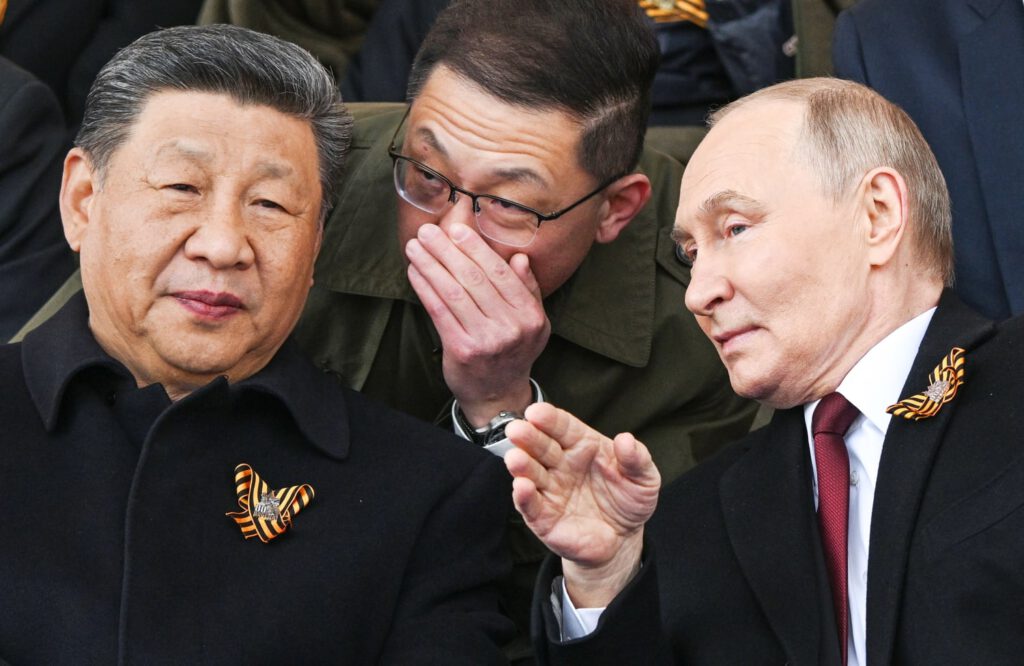
This year’s parade featured more than 10,000 troops, 125 units of ground equipment, and a carefully curated lineup of strategic weaponry designed to signal Russia’s technological evolution. Among the most discussed entries:
Military Muscle on Full Display
- ZALA Lancet loitering munitions, mounted in the beds of military trucks, drew significant attention for their increasing use in modern asymmetric warfare, especially in Ukraine.
- Aerial flyovers by Su-57 stealth fighters and Tu-95MS strategic bombers reminded spectators of the full spectrum of Russia’s airpower.
- RS-24 Yars ICBM
- Tornado-S (MRLS)
The message was unmistakable: Russia is prepared, modernizing, and deeply rooted in its historical identity.
Veterans and the Next Generation
One of the most poignant moments came as a formation of cadets marched past, followed by surviving WWII veterans in vintage GAZ-67 vehicles. Many in the crowd waved flags and held portraits of ancestors who fought in the war, continuing the “Immortal Regiment” tradition.
A Nation United in Memory
The parade opened with a moment of solemn silence, followed by the tolling of the Kremlin’s Spasskaya Tower bells, honoring the 27 million Soviet lives lost during the Great Patriotic War. President Vladimir Putin, flanked by veterans and military officials, laid a wreath at the Tomb of the Unknown Soldier, emphasizing the continued importance of remembrance and national unity.
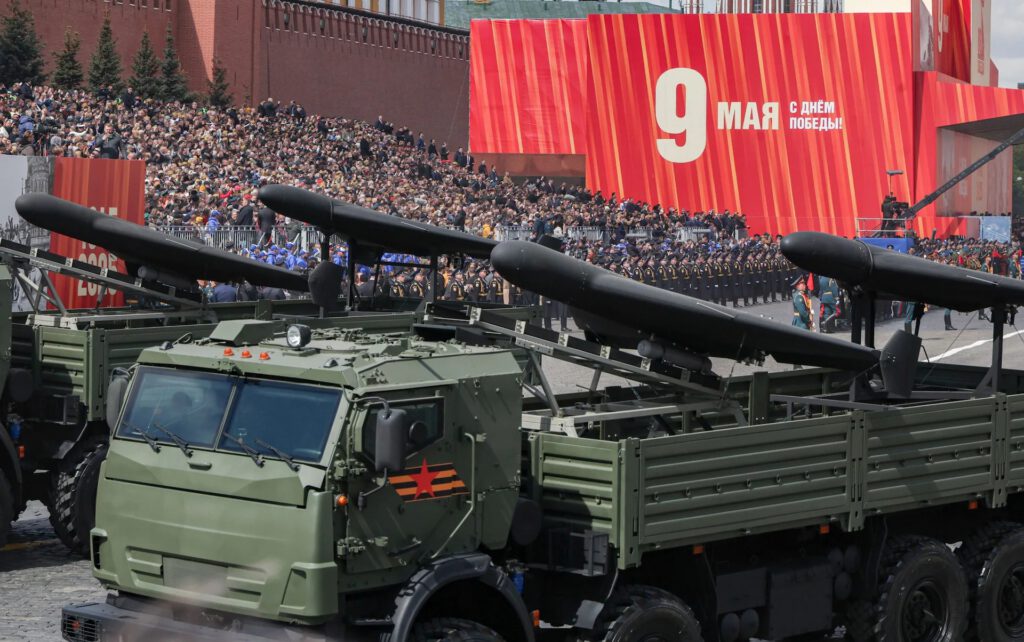
The Geran-2 is a long-range, propeller-driven loitering munition capable of delivering precision strikes on various targets, including infrastructure and military assets. Its design allows it to remain airborne for extended periods before engaging a target, making it effective for both reconnaissance and attack missions. The drone’s relatively low cost and simplicity have made it a staple in asymmetric warfare scenarios
The Geran-2 (suicide) Drone has its origin in the Shahed-136 from Iran. It’s commonly used in the war with the Ukraine.
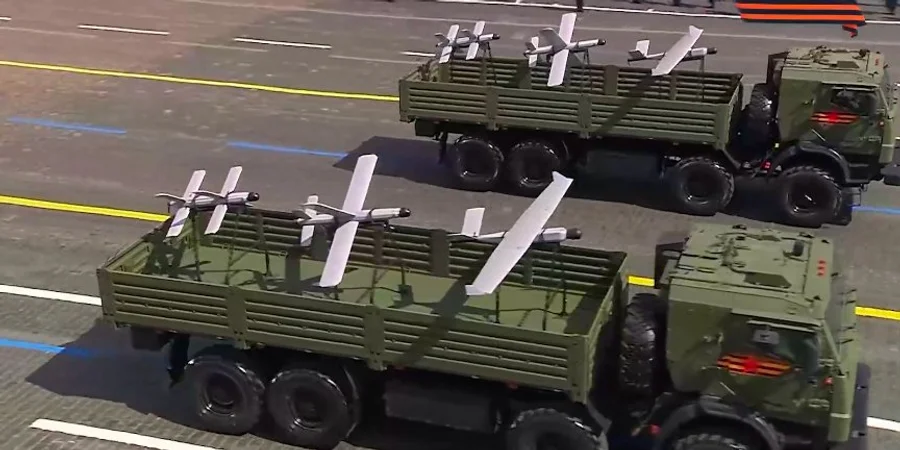
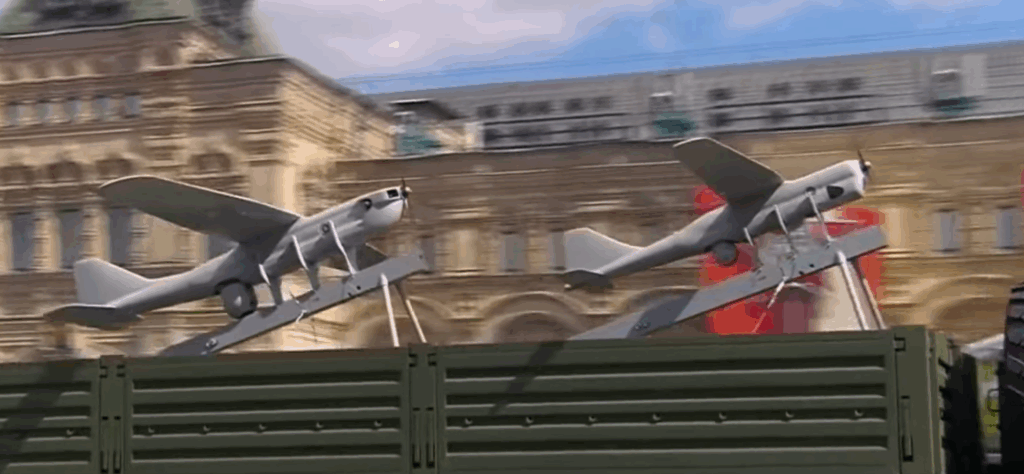
Couple of Olran-10 UAV’s, the Orlan is a widely used catapult launched UAV. It’s main role is reconnaissance, it has a range up to 600 km. Often used in Swarm formations. Operational used is the Ukraine and Syria.
Specs:
- High-mounted wings with slight dihedral
- Push-propeller engine mounted at the rear
- Skid-type launch rail (as seen on the truck)
- Compact fuselage and relatively small size
- Deployed from mobile platforms, often in clusters
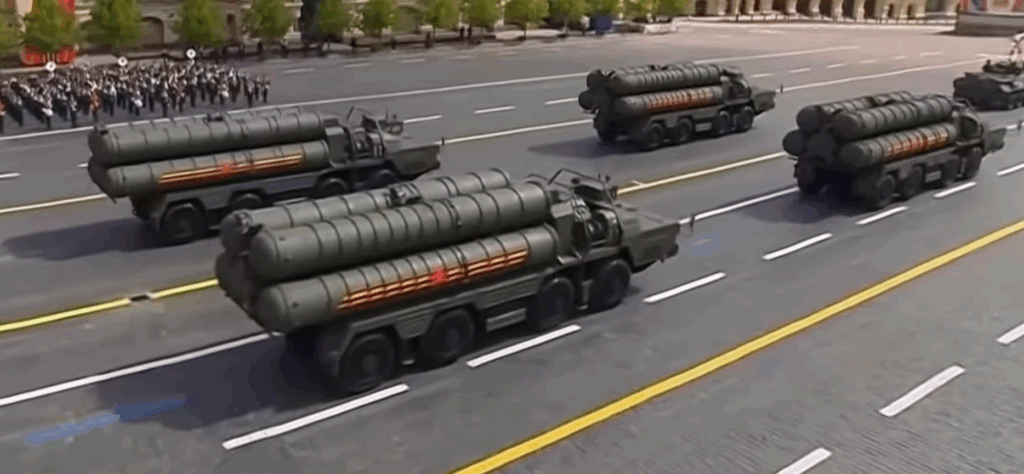
Group of S-400 air defence systems, passing by during the parade. They S-400 can launch variety of missiles with different ranges and roles. like High-speed aircraft & cruise missiles intercept and Long-range, high-altitude intercepts (400km)
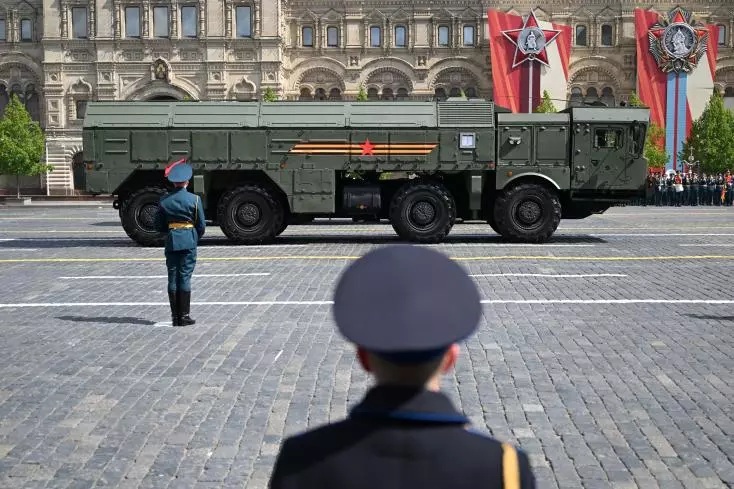
The Russian Armed Forces prominently featured the Iskander-M short-range ballistic missile system as part of the mechanized column. This inclusion underscored Russia’s emphasis on showcasing its advanced missile capabilities
Iskander-M SRBM has a range of +/- 500 Km. its more or less the Russian eqvilant of the American ATACMS. This missile system is also extensively used against the Ukraine. And air defense units (patriot) seems to have a really hard time intercepting the Iskander.
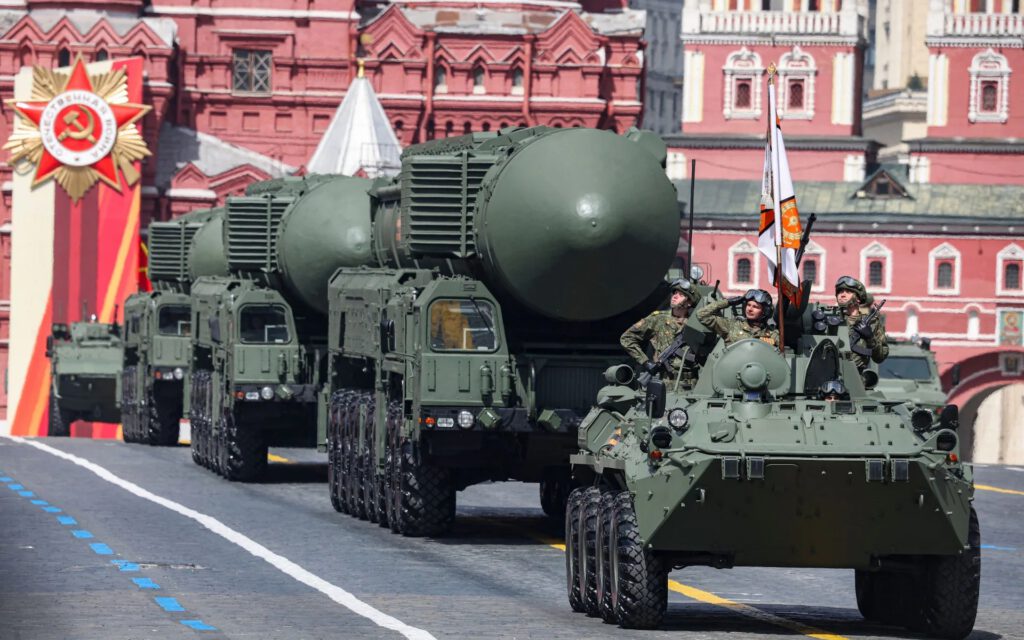
The RS-24 Yars is a modern ICBM equipped with multiple independently targetable reentry vehicles (MIRVs), capable of delivering nuclear warheads to targets over 10,000 kilometers away. Its mobility and advanced countermeasure systems enhance its survivability against missile defenses
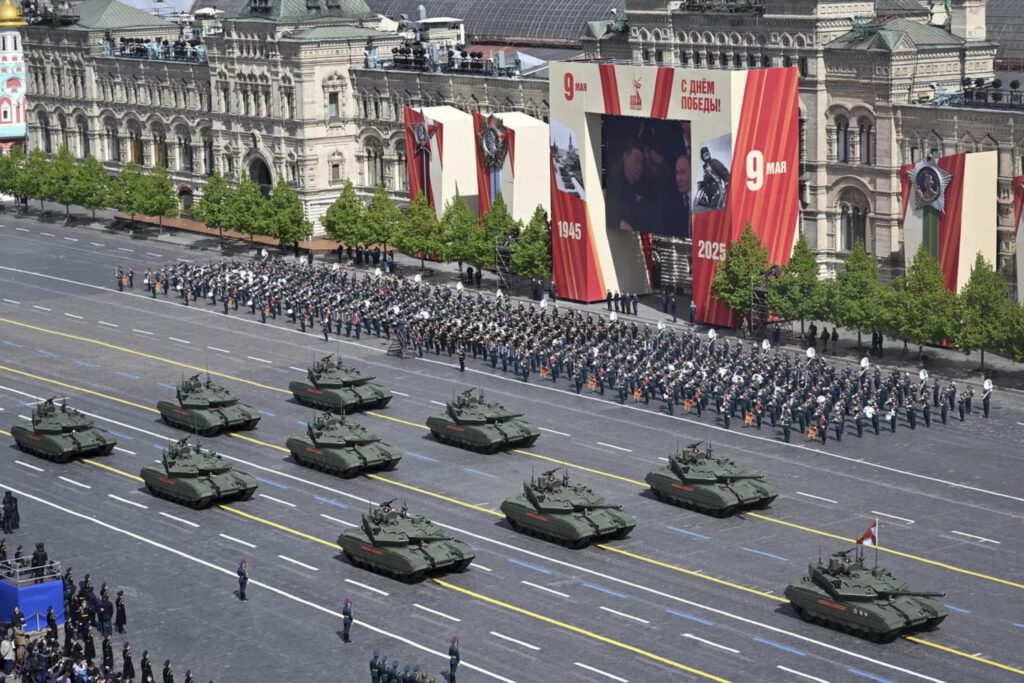
Several T-90 MBT driving by on the parade, the T-90 was absent during the 2023 and 2024 parade. One of the causes could be operational losses it suffered in the war with the Ukraine.
The T-90M ‘Proryv’ represents the latest evolution of Russia’s T-90 series, key features include a newly designed turret, a 125mm 2A46M-5 smoothbore gun.
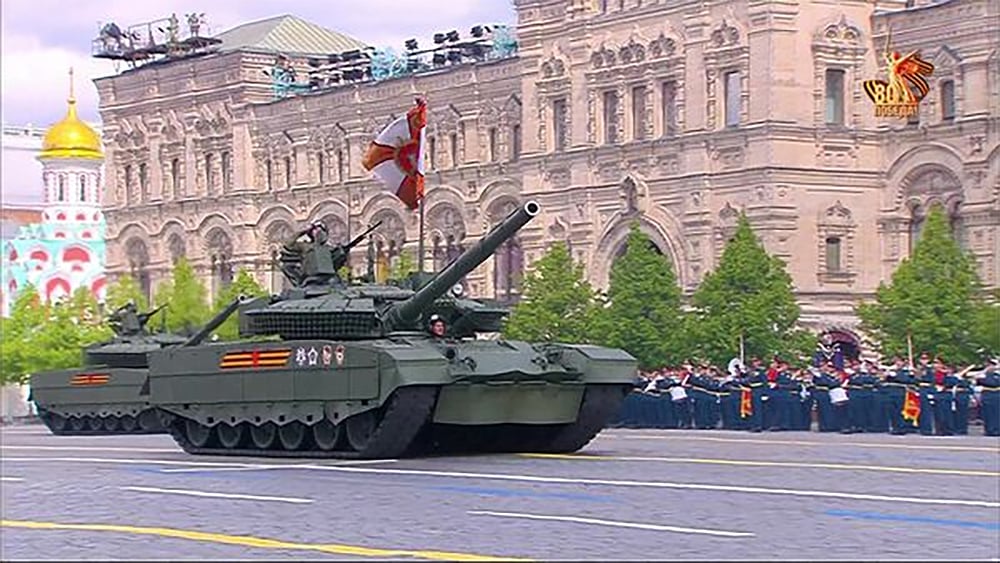
The T-80BVM, an upgraded variant of the Soviet-era T-80, was part of the mechanized column during the parade. This model boasts significant enhancements, including:
- Relikt explosive reactive armor for improved protection against modern anti-tank munitions.
- Sosna-U multichannel gunner’s sight, providing advanced target acquisition capabilities.
- Gas turbine engine, offering superior mobility and performance in cold climates.

The T-72B3M is an extensively upgraded version of the Soviet-era T-72 tank, incorporating numerous improvements to meet contemporary battlefield requirements:
- Enhanced Armor Protection: The tank is equipped with Relikt explosive reactive armor (ERA) on the upper glacis and hull sides, replacing the older Kontakt-5 ERA. This upgrade brings its protection level closer to that of more advanced tanks like the T-90M.
- Improved Firepower: The T-72B3M features a modernized 125mm 2A46M-5 smoothbore gun, capable of firing a variety of ammunition types, including armor-piercing fin-stabilized discarding sabot (APFSDS) rounds and anti-tank guided missiles (ATGMs).
- Advanced Fire Control and Sighting Systems: The integration of the Sosna-U multichannel gunner’s sight provides enhanced target acquisition capabilities, including thermal imaging and laser rangefinding, allowing for effective engagement of targets day or night.

Group of Kurganets-25 Russia’s next-generation tracked combat platform, they are to replace the aging BMP.
- Kurganets-25 IFV Specs:
- Mobility: Amphibious; powered by a 800+ hp engine
- Role: Infantry Fighting Vehicle (can also serve as APC or command variant)
- Weight: Approx. 25 tons
- Crew: 3 (commander, gunner, driver) + 6–8 infantry
Armament:
- 30 mm 2A42 automatic cannon
- 7.62 mm coaxial machine gun
- Kornet-EM ATGMs (Anti-Tank Guided Missiles)
- Protection: Modular armor, ERA packages, active protection system (planned)

At the 2025 Victory Day Parade in Moscow on May 9, the Russian Armed Forces prominently featured the Tornado-S multiple launch rocket system (MLRS), underscoring its role in modernizing Russia’s artillery capabilities.
The Tornado-S is an advanced MLRS designed to replace older systems like the BM-30 Smerch. It is capable of firing 300mm rockets equipped with precision-guided munitions, extending its effective range up to 120 kilometers. This system enhances the Russian military’s ability to conduct long-range, high-precision strikes against various targets.
Notable
- No flyover segment (or a reduced one) due to weather and/or risk mitigation—an increasing trend since 2022.
- Limited foreign military participation, showing Russia’s shifting alliances and the impact of international isolation.
- Civilian morale and veteran engagement appeared lower-key compared to pre-2020 parades, perhaps due to economic strain or shifting public sentiment
Conclusion:
he Victory Day Parade 2025 was not just a celebration of historical victory—it was a carefully orchestrated demonstration of modern Russian military doctrine, resilience under pressure, and national unity under strain.
Ultimately, the 2025 parade reaffirmed the Kremlin’s intent to use military symbolism as a core pillar of national narrative, especially in a time of strategic confrontation and global scrutiny.
It combined tradition and technology, emphasizing both past glories and future readiness.
Despite geopolitical isolation, the event projected confidence and defiance, especially through its focus on advanced missile defense, UAV capabilities, and modern armored units.
